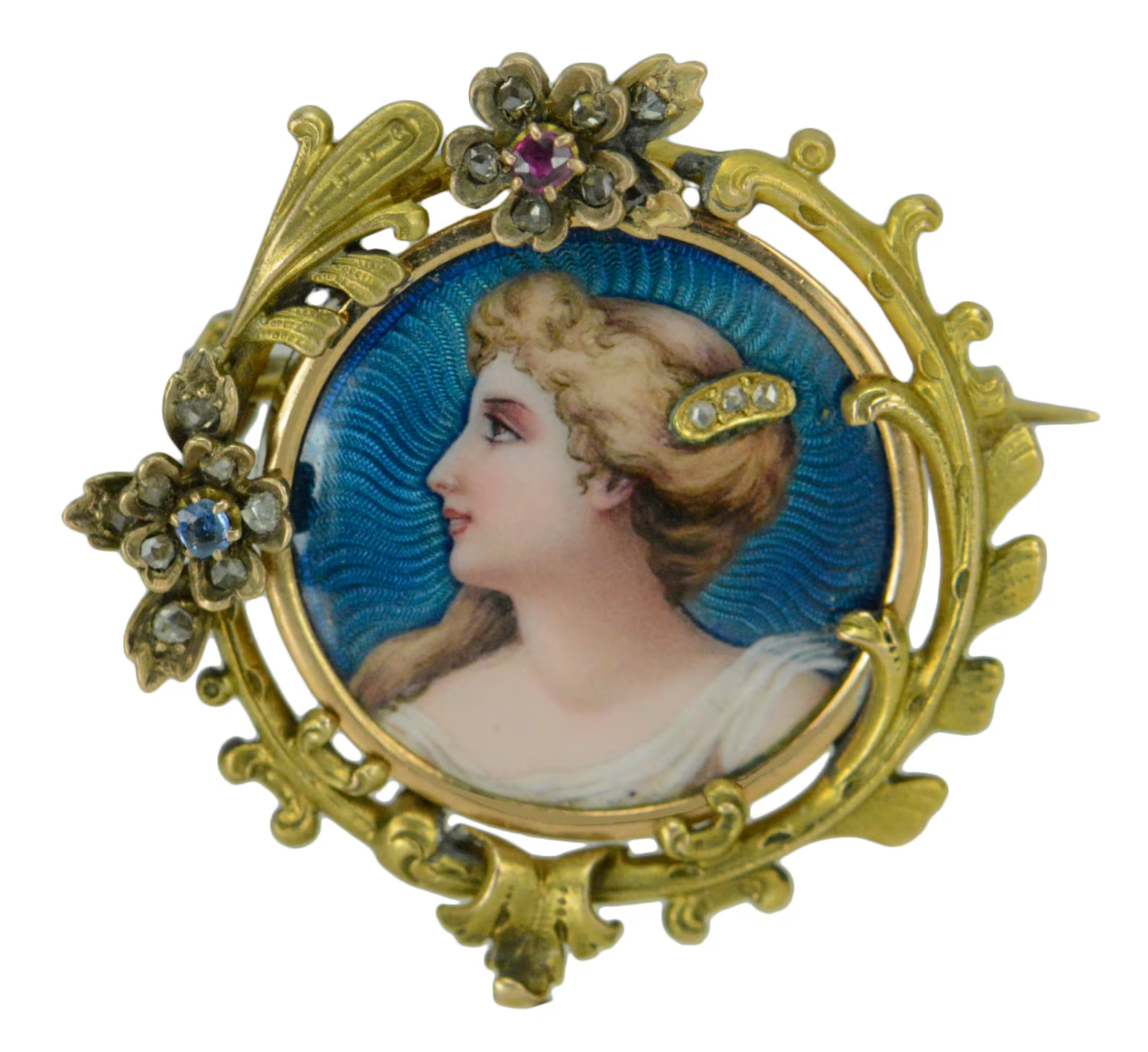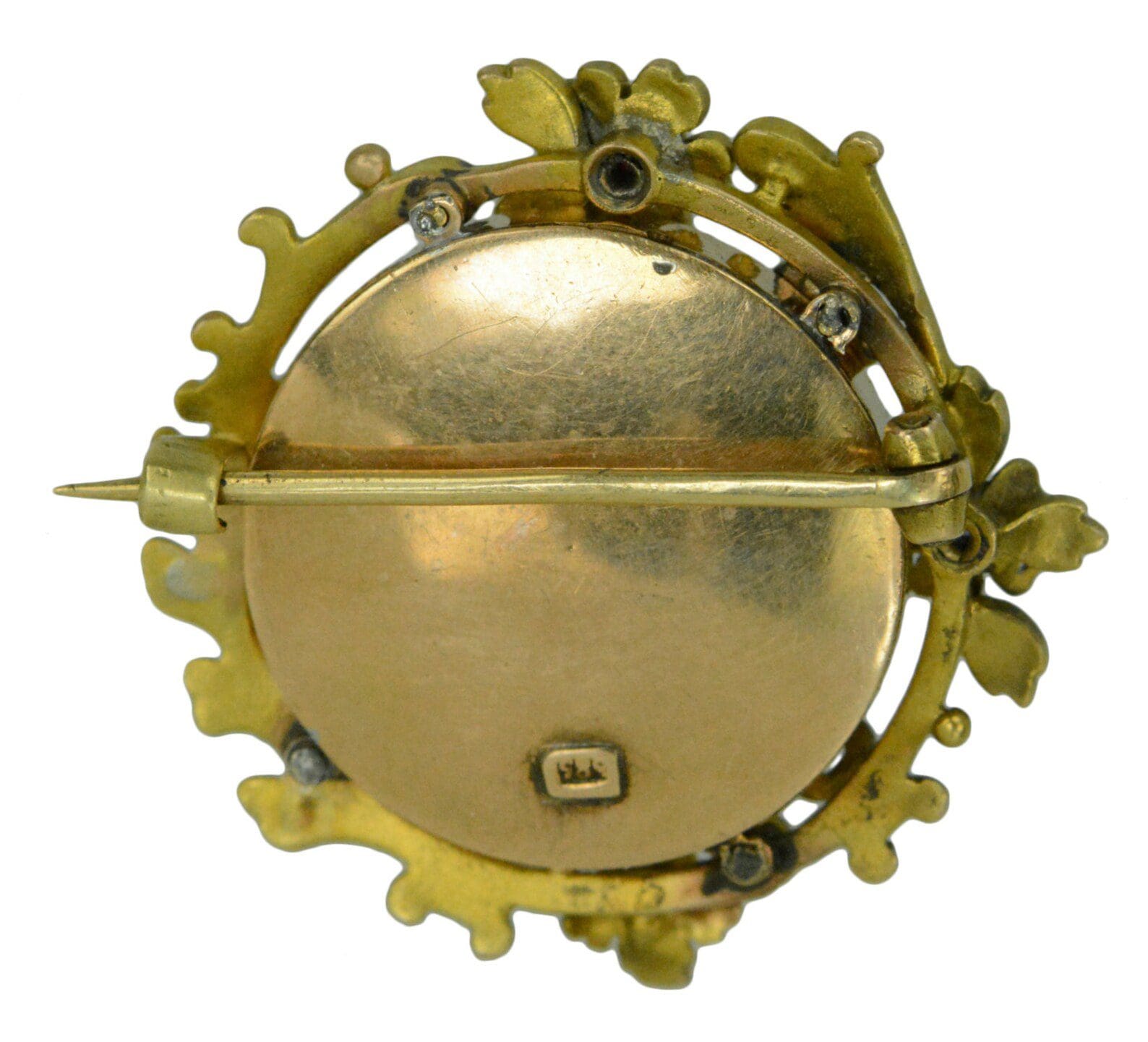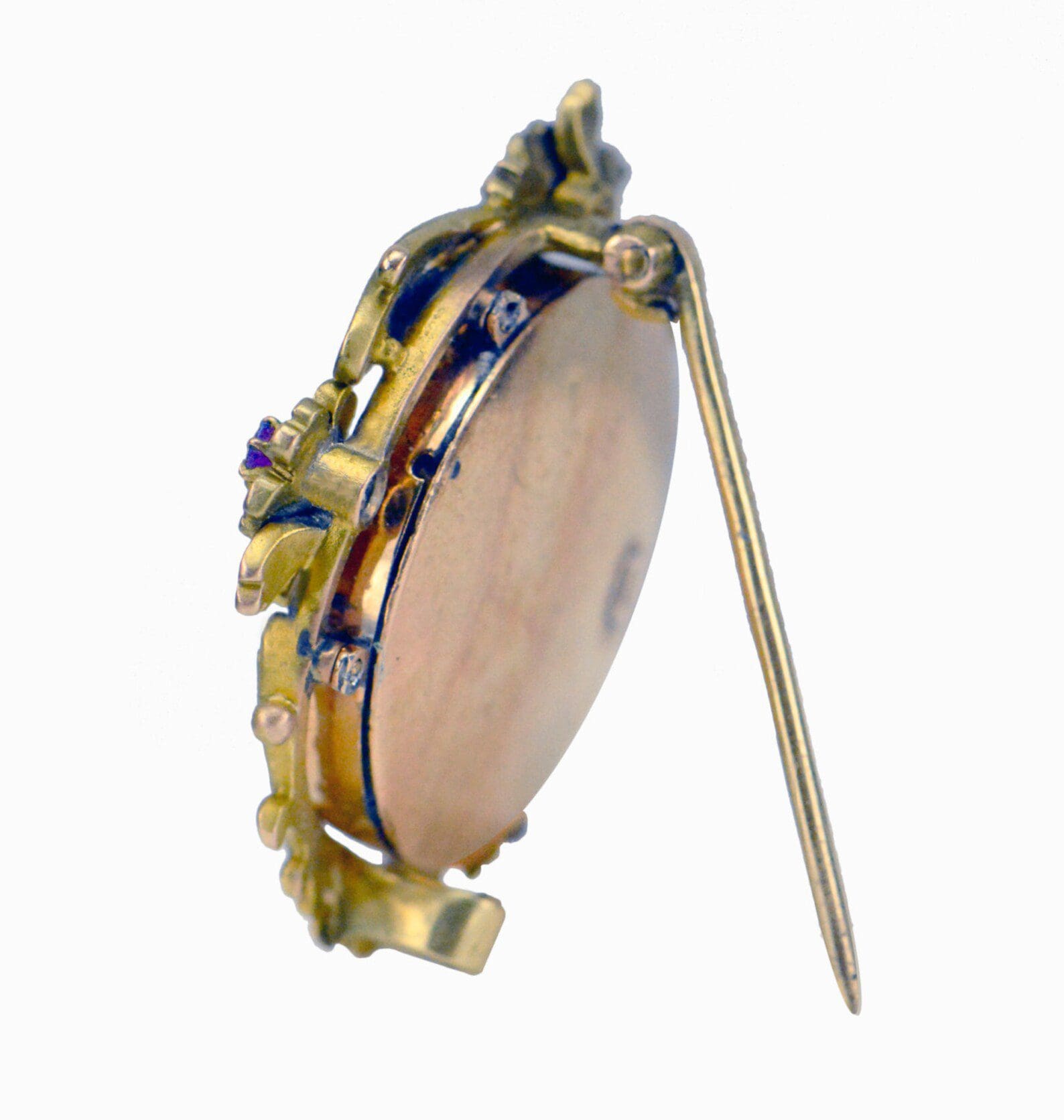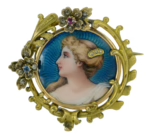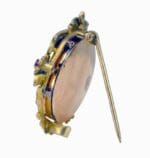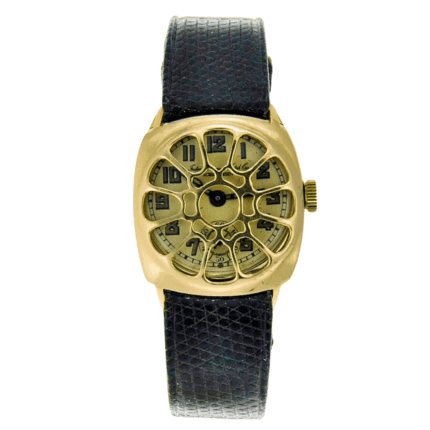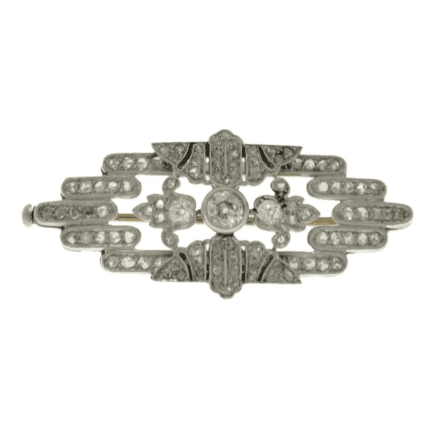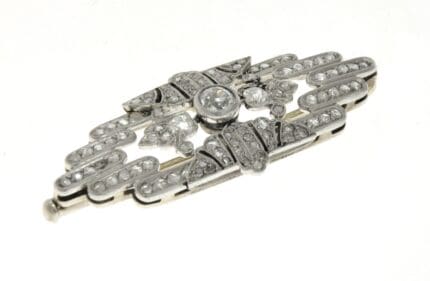Magnificent ** Jewel-Set Guilloche Enamel Portrait Brooch, Solid 14K Gold, Swiss 19th Century **
This wonderful, exquisite and rare, hand-crafted “technique Genevoise” guilloche enamel portrait brooch is a brilliant example of wearable art… One of the finest it has ever been our privilege to offer!
The triple-diamond encrusted enamel portrait of a beautiful woman in romantic profile, set against a vibrant blue guilloche background, shows skin-tones with a lovely blush as well as blond locks… all so finely detailed that the artist’s use of single-haired brushes can be discerned. Finally, the artistry is mounted within a multi-tier, solid 14K rose-gold/green-gold floral and garland surround that is individually set with fifteen further rose diamonds as well as, respectively, ruby and sapphire center stones.
This precious antique ornament features its original “T” pin with clasp, and additionally could be worn as a very elegant pendant, since tube & loop convertors readily are available.
- Material: Solid 14K rose-gold and 14K green-gold. Hallmarked 585 (14K gold), tested and guaranteed.
- Stones: Eighteen rose-cut diamonds, one ruby and one sapphire.
- Size: 31 mm x 31 mm
- Condition: Excellent
Shipping Worldwide via Courrier Service. Duty-Free Shipping within Europe.
Payment: If you prefer to pay by bank transfer or lay-away, please send us a message. Likewise, if check-out proves unable to process your credit card.
The History of “Geneva Enamel”
As early as 1570 to 1580, highly decorated jewelry-like watches began to appear. As such enamel – primarily champlevé and cloisonné – played a major role. In the former, the artist hollowed out the support to delimit the enamel’s outlines… while, in the latter, fine gold wires were used to delimit the outlines. In both cases the cavities thus formed were filled with enamels and fired in a kiln.
Subsequently, a further method was developed: enamel miniature painting… today known as TECHNIQUE GENEVOISE… a historical specialty of Geneva.
This method no longer consisted of filling cavities with enamel; instead a base coat of opaque enamel was applied to the level surface… and after an initial firing in the kiln for only a few seconds with temperatures up to 800° C, the artist would paint the decoration by sequentially applying and firing each color depending on its fusion temperature and resistance.


